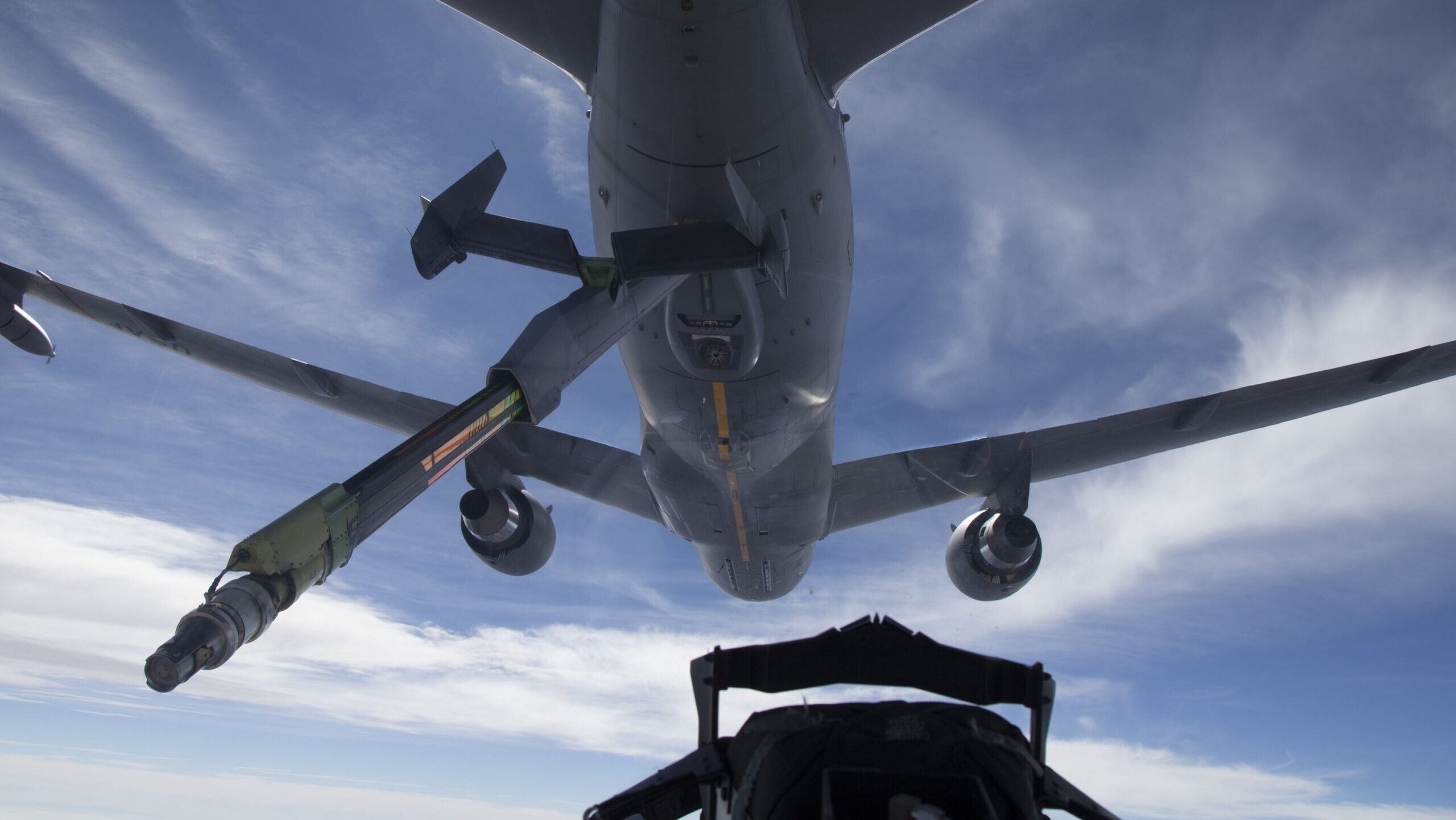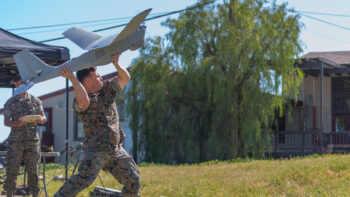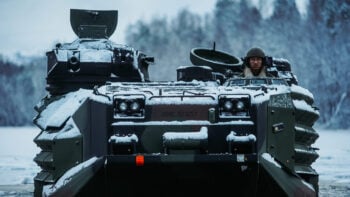
A KC-46A Pegasus aerial refueling aircraft connects with an F-15 Strike Eagle test aircraft from Eglin Air Force Base, Florida, on Oct. 29th, 2018. (U.S. Air Force photo by Master Sgt Michael Jackson)
WASHINGTON — The Air Force is interested in a “broad” range of engines that could potentially power its upcoming tanker fleet and has begun industry outreach to assess its options, according to a request for information (RFI) released by the service Monday.
The RFI seeks input on the capabilities of existing engines and opportunities to scale them up, as well as the potential for introducing entirely new powerplants that would power the service’s planned future refuelers known as the Next Generation Air refueling System (NGAS). Vendors should assume a program would kick off in the third quarter of fiscal year 2025, the notice says, which requests engine capabilities to be defined in three intervals — six, 10 and 15 years — from that date.
Industry responses will “support” an analysis of alternatives (AoA) for the NGAS program, with the RFI noting that the “propulsion thrust range of interest for this RFI is broad” due to the ongoing AoA. The RFI was previously reported by Aviation Week.
Most details of the notice are not publicly available, though the RFI does generally note characteristics sought by service officials such as “reduced runway takeoff distance” and fuel offload. Responses are due April 30, the notice says.
After overhauling its tanker strategy last year, the Air Force in the near term is planning an interim refueler buy to continue modernizing the fleet, which would bridge the gap between the end of KC-46A deliveries currently planned for 2029 and NGAS becoming operational by the mid-2030s. Options for that approach are down to either more Boeing KC-46As or Airbus A330 MRTTs, which analysts expect Boeing to have a leg up in after Lockheed Martin bowed out of a previous partnership with Airbus.
In written testimony to the House Armed Services Seapower and Projection Forces subcommittee recently [PDF], Air Force acquisition czar Andrew Hunter said that the acquisition strategy for the interim tanker buy is expected to be determined by Q3 of FY24. The NGAS AoA is additionally expected to be completed by October, Hunter said.
The NGAS tanker could take many shapes including entirely new, “clean-sheet” designs, service officials have said. The refueler is being designed with the vast ranges and austere environments of the Indo-Pacific in mind as well, which Air Mobility Command chief Gen. Mike Minihan has said will further require features like enhanced connectivity.
In a February briefing with reporters, Minihan emphasized that NGAS, as well as a related effort to recapitalize the service’s airlift fleet known as Next Generation Airlift (NGAL), would not consist of singular catch-all solutions — which would theoretically open up options for different engines as well.
“It’s not one airplane. It’s a system,” Minihan said of NGAS and NGAL. “It’s not one-size-fits-all. I’m not looking to develop a fleet that has to handle every threat environment.”
“An enormous amount” of those fleets are going to look similar to aircraft today, Minihan added, but a much smaller portion will be capable of operating in “extreme threat areas” — likely alluding to characteristics like low observability that could allow a tanker to gas up jets in contested environments.
“This is about a family of things that work together, and not just ‘we picked that one airplane and it has to do everything,’” he said.
Marines new ‘Fusion Center’ aimed transitioning cutting edge tech more smoothly
Marine Corps officials said the new office will act as a bridge over the Pentagon’s infamous “valley of death” and will first focus on counter-drone systems.



























